Allen Toussaint is one of those names people know, but don’t know why. One of the enduring figures of the New Orleans music scene, he got his feet wet in the late ’50’s as a session man for the likes of Fats Domino, moving into production and ghostwriting in the ’60’s for soul luminaries like Lee Dorsey and Irma Thomas and penning many of the songs he is (or other people are) known for today. However, it wasn’t until the ’70’s that Toussaint really hit his artistic and creative stride, when he started consistently working with The Meters and releasing records under his own name. Despite penning and producing reams of classic tunes during this period, his name remains one that, while not unknown, isn’t fully understood. The albums below are a handful of our favorite moments, some better known than others, that defined Allen Toussaint and the New Orleans sound in the ’70’s.
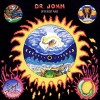 Dr. John In The Right Place (1973) Dr. John’s early “Night Tripper” recordings are classics of n’awlins hoodoo spook, fully evoking the hallucinogenic world of the crazed Creole witchdoctor he built his image on. But after four albums of this kind of dark mojo, the Dr. understandably grew curious as to how the other, day-light-dwelling half lived. Initiating this move with the previous year’s Gumbo, Toussaint and The Meters helped bring it all together on In The Right Place, stirring in an extra dose of traditional New Orleans R&B and funk that helps propel and lift the songs in ways he’d never dared before. While the mood is definitely brighter, some of the signature touches of his early recordings remain, like the moody tribal hand-drumming that pops up on the slower cuts. And then there’s that voice – few things exude the charm and menace of the Deep South like Dr. John’s slurred creole growl – a tool no amount of polish can completely neutralize. This one catches the key players of the scene at the height of their powers, bringing the untouchable sound of The Meters and Toussaint’s stellar horn and songwriting arrangements together with one of the more singular voices of their generation.
Dr. John In The Right Place (1973) Dr. John’s early “Night Tripper” recordings are classics of n’awlins hoodoo spook, fully evoking the hallucinogenic world of the crazed Creole witchdoctor he built his image on. But after four albums of this kind of dark mojo, the Dr. understandably grew curious as to how the other, day-light-dwelling half lived. Initiating this move with the previous year’s Gumbo, Toussaint and The Meters helped bring it all together on In The Right Place, stirring in an extra dose of traditional New Orleans R&B and funk that helps propel and lift the songs in ways he’d never dared before. While the mood is definitely brighter, some of the signature touches of his early recordings remain, like the moody tribal hand-drumming that pops up on the slower cuts. And then there’s that voice – few things exude the charm and menace of the Deep South like Dr. John’s slurred creole growl – a tool no amount of polish can completely neutralize. This one catches the key players of the scene at the height of their powers, bringing the untouchable sound of The Meters and Toussaint’s stellar horn and songwriting arrangements together with one of the more singular voices of their generation.
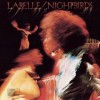 Labelle Nightbirds (1974) Though they’re rarely mentioned with the same esteem held for their predecessors (Aretha Franklin, The Supremes) or their direct descendants, Labelle effectively built the bridge between the two. Their high-energy, funky modernization of the classic soul/R&B girl group sound looked forward to the disco inferno of Donna Summer as much as it did the unhinged ’90’s diva-isms of En Vogue or TLC. Notable for the presence of the Toussaint-penned hit and calling-card, “Lady Marmalade” Nightbirds is probably their best album through and through, thanks to Toussaint’s spacious production and arrangements and the lithe maneuvering of The Meters in the pocket funk support. Patti Labelle’s move into a more mainstream solo career sometimes overshadows just how great Labelle were for awhile, especially Nona Hendryx, who wrote most of the group’s material and was responsible for their increasingly flamboyant attitude and image. Along with P-Funk, Labelle were at the vanguard of Nubian-space-glam, predicting the outre stylings of Kool Keith, Outkast, and any number of modern Hiphop/R&B divas.
Labelle Nightbirds (1974) Though they’re rarely mentioned with the same esteem held for their predecessors (Aretha Franklin, The Supremes) or their direct descendants, Labelle effectively built the bridge between the two. Their high-energy, funky modernization of the classic soul/R&B girl group sound looked forward to the disco inferno of Donna Summer as much as it did the unhinged ’90’s diva-isms of En Vogue or TLC. Notable for the presence of the Toussaint-penned hit and calling-card, “Lady Marmalade” Nightbirds is probably their best album through and through, thanks to Toussaint’s spacious production and arrangements and the lithe maneuvering of The Meters in the pocket funk support. Patti Labelle’s move into a more mainstream solo career sometimes overshadows just how great Labelle were for awhile, especially Nona Hendryx, who wrote most of the group’s material and was responsible for their increasingly flamboyant attitude and image. Along with P-Funk, Labelle were at the vanguard of Nubian-space-glam, predicting the outre stylings of Kool Keith, Outkast, and any number of modern Hiphop/R&B divas.
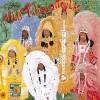 Wild Tchoupitoulas (1976) Tchoupitoulas St. is an ancient New Orleans thouroughfare, named for the Native American Indian tribe who cut it’s original path along the Mississippi as a trade route. The deep history of the name bleeds through this joyful and unique album at every instance, imbuing the proceedings with a real sense of place, and the people who inhabit it. The band was made up of members of The Meters and their extended family – representatives of the nearly-extinct Tchoupitoulas tribe – and produced by Allen Toussaint. In terms of definitive New Orleans records, this ranks with the best work of Dr. John in the way it wholly embodies the spirit of the city, taking the Meters signature groove and riding it through the streets of the Mardi Gras parade without a care in the world. You could be sipping a cup of dirty Mississippi River water and still be in a good mood when the needle drops on this one.
Wild Tchoupitoulas (1976) Tchoupitoulas St. is an ancient New Orleans thouroughfare, named for the Native American Indian tribe who cut it’s original path along the Mississippi as a trade route. The deep history of the name bleeds through this joyful and unique album at every instance, imbuing the proceedings with a real sense of place, and the people who inhabit it. The band was made up of members of The Meters and their extended family – representatives of the nearly-extinct Tchoupitoulas tribe – and produced by Allen Toussaint. In terms of definitive New Orleans records, this ranks with the best work of Dr. John in the way it wholly embodies the spirit of the city, taking the Meters signature groove and riding it through the streets of the Mardi Gras parade without a care in the world. You could be sipping a cup of dirty Mississippi River water and still be in a good mood when the needle drops on this one.
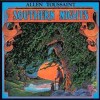 Allen Touissant Southern Nights (1975) Toussaint seemingly gave some of his best stuff away, perhaps having the intuition (and humble nature) to know when a song was just right for someone else. No matter how many times they’re covered in a House Of Blues revue, Lee Dorsey’s versions of “Working In A Coalmine” and “Get Out Of My Life Woman” will always be the definitive ones. However, like any good man-behind-the-scenes, Toussaint managed to hold back some of his best material for himself. All of his solo albums from this period are more than worthwhile, but Southern Nights may be the crowning achievement of his solo oeuvre. The record employs some of the same tools that made his hand in The Meters and Dr. John’s output of the period so evident while side-stepping the confines of the typical soul-funk record, with laid-back, soul-baring deliveries that roll as much as they groove. He filters his vocals through what sounds like a Hammond Leslie on many of the tracks, contributing to the humid, swampy effect of the proceedings, and transporting us into the otherworldly night scene depicted on the cover. Glen Campbell popularized the title track, but Toussaint’s performance of it remains one of the more moving things ever committed to tape, and a convincing, sublime love letter to New Orleans and The South.
Allen Touissant Southern Nights (1975) Toussaint seemingly gave some of his best stuff away, perhaps having the intuition (and humble nature) to know when a song was just right for someone else. No matter how many times they’re covered in a House Of Blues revue, Lee Dorsey’s versions of “Working In A Coalmine” and “Get Out Of My Life Woman” will always be the definitive ones. However, like any good man-behind-the-scenes, Toussaint managed to hold back some of his best material for himself. All of his solo albums from this period are more than worthwhile, but Southern Nights may be the crowning achievement of his solo oeuvre. The record employs some of the same tools that made his hand in The Meters and Dr. John’s output of the period so evident while side-stepping the confines of the typical soul-funk record, with laid-back, soul-baring deliveries that roll as much as they groove. He filters his vocals through what sounds like a Hammond Leslie on many of the tracks, contributing to the humid, swampy effect of the proceedings, and transporting us into the otherworldly night scene depicted on the cover. Glen Campbell popularized the title track, but Toussaint’s performance of it remains one of the more moving things ever committed to tape, and a convincing, sublime love letter to New Orleans and The South.
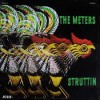 The Meters Struttin’ (1970) It would be remiss (and nearly impossible) to write about New Orleans music in the ’70’s without mentioning The Meters own studio albums – though so much ink has already been devoted to this pursuit, we chose not to single one out here. They are the building blocks of all the aforementioned classic albums, and a bunch of other songs you’ve heard and loved without knowing why (it’s The Meters). Struttin’ is a highlight, but it’s hard to go wrong with any of their early ’70’s albums.
The Meters Struttin’ (1970) It would be remiss (and nearly impossible) to write about New Orleans music in the ’70’s without mentioning The Meters own studio albums – though so much ink has already been devoted to this pursuit, we chose not to single one out here. They are the building blocks of all the aforementioned classic albums, and a bunch of other songs you’ve heard and loved without knowing why (it’s The Meters). Struttin’ is a highlight, but it’s hard to go wrong with any of their early ’70’s albums.
Further listening: One of Tousaint and The Meters’ more interesting appearances proved to be Sneakin’ Sally Through The Alley, the debut of one Robert Palmer. Although remembered for his MTV-era hits (and the models in his videos) of the ’80’s, Palmer was a dedicated dilettante…err, soul man, at heart. Although not quite a classic, The Meters, Toussaint, and Lowell George help make Sneakin’ a pretty compelling look for Palmer, making his white R&B moves as close to natural as he’s likely to get. Not for the faint of heart, Toussaint’s involvement in The Mighty Diamonds Ice On Fire remains one of the more curious entries in either of the aforementioned parties’ repertoires and one of the few known specimens of the ill-fated Reggae-Funk sub-genre to this day. File under: much further listening. — Jonathon Treneff
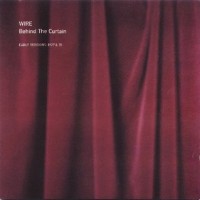


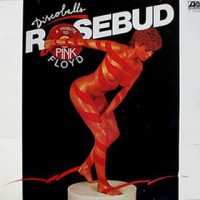
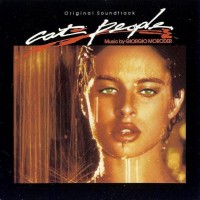
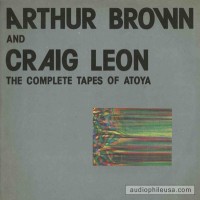
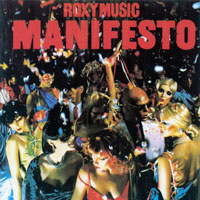

 Dr. John In The Right Place (1973) Dr. John’s early “Night Tripper” recordings are classics of n’awlins hoodoo spook, fully evoking the hallucinogenic world of the crazed Creole witchdoctor he built his image on. But after four albums of this kind of dark mojo, the Dr. understandably grew curious as to how the other, day-light-dwelling half lived. Initiating this move with the previous year’s Gumbo, Toussaint and The Meters helped bring it all together on In The Right Place, stirring in an extra dose of traditional New Orleans R&B and funk that helps propel and lift the songs in ways he’d never dared before. While the mood is definitely brighter, some of the signature touches of his early recordings remain, like the moody tribal hand-drumming that pops up on the slower cuts. And then there’s that voice – few things exude the charm and menace of the Deep South like Dr. John’s slurred creole growl – a tool no amount of polish can completely neutralize. This one catches the key players of the scene at the height of their powers, bringing the untouchable sound of The Meters and Toussaint’s stellar horn and songwriting arrangements together with one of the more singular voices of their generation.
Dr. John In The Right Place (1973) Dr. John’s early “Night Tripper” recordings are classics of n’awlins hoodoo spook, fully evoking the hallucinogenic world of the crazed Creole witchdoctor he built his image on. But after four albums of this kind of dark mojo, the Dr. understandably grew curious as to how the other, day-light-dwelling half lived. Initiating this move with the previous year’s Gumbo, Toussaint and The Meters helped bring it all together on In The Right Place, stirring in an extra dose of traditional New Orleans R&B and funk that helps propel and lift the songs in ways he’d never dared before. While the mood is definitely brighter, some of the signature touches of his early recordings remain, like the moody tribal hand-drumming that pops up on the slower cuts. And then there’s that voice – few things exude the charm and menace of the Deep South like Dr. John’s slurred creole growl – a tool no amount of polish can completely neutralize. This one catches the key players of the scene at the height of their powers, bringing the untouchable sound of The Meters and Toussaint’s stellar horn and songwriting arrangements together with one of the more singular voices of their generation. Labelle Nightbirds (1974) Though they’re rarely mentioned with the same esteem held for their predecessors (Aretha Franklin, The Supremes) or their direct descendants, Labelle effectively built the bridge between the two. Their high-energy, funky modernization of the classic soul/R&B girl group sound looked forward to the disco inferno of Donna Summer as much as it did the unhinged ’90’s diva-isms of En Vogue or TLC. Notable for the presence of the Toussaint-penned hit and calling-card, “Lady Marmalade” Nightbirds is probably their best album through and through, thanks to Toussaint’s spacious production and arrangements and the lithe maneuvering of The Meters in the pocket funk support. Patti Labelle’s move into a more mainstream solo career sometimes overshadows just how great Labelle were for awhile, especially Nona Hendryx, who wrote most of the group’s material and was responsible for their increasingly flamboyant attitude and image. Along with P-Funk, Labelle were at the vanguard of Nubian-space-glam, predicting the outre stylings of Kool Keith, Outkast, and any number of modern Hiphop/R&B divas.
Labelle Nightbirds (1974) Though they’re rarely mentioned with the same esteem held for their predecessors (Aretha Franklin, The Supremes) or their direct descendants, Labelle effectively built the bridge between the two. Their high-energy, funky modernization of the classic soul/R&B girl group sound looked forward to the disco inferno of Donna Summer as much as it did the unhinged ’90’s diva-isms of En Vogue or TLC. Notable for the presence of the Toussaint-penned hit and calling-card, “Lady Marmalade” Nightbirds is probably their best album through and through, thanks to Toussaint’s spacious production and arrangements and the lithe maneuvering of The Meters in the pocket funk support. Patti Labelle’s move into a more mainstream solo career sometimes overshadows just how great Labelle were for awhile, especially Nona Hendryx, who wrote most of the group’s material and was responsible for their increasingly flamboyant attitude and image. Along with P-Funk, Labelle were at the vanguard of Nubian-space-glam, predicting the outre stylings of Kool Keith, Outkast, and any number of modern Hiphop/R&B divas. Wild Tchoupitoulas (1976) Tchoupitoulas St. is an ancient New Orleans thouroughfare, named for the Native American Indian tribe who cut it’s original path along the Mississippi as a trade route. The deep history of the name bleeds through this joyful and unique album at every instance, imbuing the proceedings with a real sense of place, and the people who inhabit it. The band was made up of members of The Meters and their extended family – representatives of the nearly-extinct Tchoupitoulas tribe – and produced by Allen Toussaint. In terms of definitive New Orleans records, this ranks with the best work of Dr. John in the way it wholly embodies the spirit of the city, taking the Meters signature groove and riding it through the streets of the Mardi Gras parade without a care in the world. You could be sipping a cup of dirty Mississippi River water and still be in a good mood when the needle drops on this one.
Wild Tchoupitoulas (1976) Tchoupitoulas St. is an ancient New Orleans thouroughfare, named for the Native American Indian tribe who cut it’s original path along the Mississippi as a trade route. The deep history of the name bleeds through this joyful and unique album at every instance, imbuing the proceedings with a real sense of place, and the people who inhabit it. The band was made up of members of The Meters and their extended family – representatives of the nearly-extinct Tchoupitoulas tribe – and produced by Allen Toussaint. In terms of definitive New Orleans records, this ranks with the best work of Dr. John in the way it wholly embodies the spirit of the city, taking the Meters signature groove and riding it through the streets of the Mardi Gras parade without a care in the world. You could be sipping a cup of dirty Mississippi River water and still be in a good mood when the needle drops on this one. Allen Touissant Southern Nights (1975) Toussaint seemingly gave some of his best stuff away, perhaps having the intuition (and humble nature) to know when a song was just right for someone else. No matter how many times they’re covered in a House Of Blues revue, Lee Dorsey’s versions of “Working In A Coalmine” and “Get Out Of My Life Woman” will always be the definitive ones. However, like any good man-behind-the-scenes, Toussaint managed to hold back some of his best material for himself. All of his solo albums from this period are more than worthwhile, but Southern Nights may be the crowning achievement of his solo oeuvre. The record employs some of the same tools that made his hand in The Meters and Dr. John’s output of the period so evident while side-stepping the confines of the typical soul-funk record, with laid-back, soul-baring deliveries that roll as much as they groove. He filters his vocals through what sounds like a Hammond Leslie on many of the tracks, contributing to the humid, swampy effect of the proceedings, and transporting us into the otherworldly night scene depicted on the cover. Glen Campbell popularized the title track, but Toussaint’s performance of it remains one of the more moving things ever committed to tape, and a convincing, sublime love letter to New Orleans and The South.
Allen Touissant Southern Nights (1975) Toussaint seemingly gave some of his best stuff away, perhaps having the intuition (and humble nature) to know when a song was just right for someone else. No matter how many times they’re covered in a House Of Blues revue, Lee Dorsey’s versions of “Working In A Coalmine” and “Get Out Of My Life Woman” will always be the definitive ones. However, like any good man-behind-the-scenes, Toussaint managed to hold back some of his best material for himself. All of his solo albums from this period are more than worthwhile, but Southern Nights may be the crowning achievement of his solo oeuvre. The record employs some of the same tools that made his hand in The Meters and Dr. John’s output of the period so evident while side-stepping the confines of the typical soul-funk record, with laid-back, soul-baring deliveries that roll as much as they groove. He filters his vocals through what sounds like a Hammond Leslie on many of the tracks, contributing to the humid, swampy effect of the proceedings, and transporting us into the otherworldly night scene depicted on the cover. Glen Campbell popularized the title track, but Toussaint’s performance of it remains one of the more moving things ever committed to tape, and a convincing, sublime love letter to New Orleans and The South. The Meters Struttin’ (1970) It would be remiss (and nearly impossible) to write about New Orleans music in the ’70’s without mentioning The Meters own studio albums – though so much ink has already been devoted to this pursuit, we chose not to single one out here. They are the building blocks of all the aforementioned classic albums, and a bunch of other songs you’ve heard and loved without knowing why (it’s The Meters). Struttin’ is a highlight, but it’s hard to go wrong with any of their early ’70’s albums.
The Meters Struttin’ (1970) It would be remiss (and nearly impossible) to write about New Orleans music in the ’70’s without mentioning The Meters own studio albums – though so much ink has already been devoted to this pursuit, we chose not to single one out here. They are the building blocks of all the aforementioned classic albums, and a bunch of other songs you’ve heard and loved without knowing why (it’s The Meters). Struttin’ is a highlight, but it’s hard to go wrong with any of their early ’70’s albums.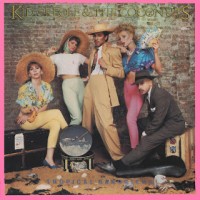
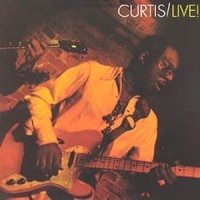
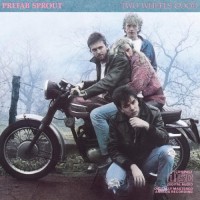
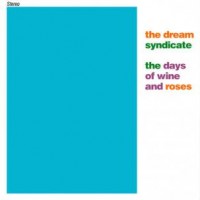
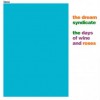 The Dream Syndicate The Days of Wine and Roses (1982). Without a doubt the most commercially viable of the Paisley Underground fleet, the Dream Syndicate were the Trojan horse that snuck everyone else into the party. Not that most of their brethren would have anything approaching mainstream success, but many would land major label contracts and a degree of recognition, at least for a time. The Days of Wine and Roses has endured for good reason – it was, pound for pound, one of the more bulletproof releases from the Paisley scene, or any of the era in general. Of course it helped that they were doing something pretty far out-of-line with the times – reviving primitive guitar meltdowns and folk melodies in the age of New Romanticism and Eye Of The Tiger.
The Dream Syndicate The Days of Wine and Roses (1982). Without a doubt the most commercially viable of the Paisley Underground fleet, the Dream Syndicate were the Trojan horse that snuck everyone else into the party. Not that most of their brethren would have anything approaching mainstream success, but many would land major label contracts and a degree of recognition, at least for a time. The Days of Wine and Roses has endured for good reason – it was, pound for pound, one of the more bulletproof releases from the Paisley scene, or any of the era in general. Of course it helped that they were doing something pretty far out-of-line with the times – reviving primitive guitar meltdowns and folk melodies in the age of New Romanticism and Eye Of The Tiger.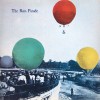 Rain Parade Emergency Third Rail Power Trip/Explosions In The Glass Palace (1983/1984). Although many of the Paisley Underground’s main players would manage to sustain careers in some form or other, The Rain Parade’s Steven Roback was perhaps the only figure who would go on to eclipse the success and popularity of his PU-era acts. Growing up in the age of Mazzy Star, it would be years before I realized Roback had been quietly refining his hazy whisper-core for a decade before the commercial breakthrough of “Fade Into You.” Hope Sandoval would first appear in later incarnations of Opal, but it was with Rain Parade that Roback began crafting his strain of hushed psychedelic pop that would become so influential years down the line. It’s no secret that a lot of pop music from this era did not age well, but Rain Parade’s modern take on the dark side of psychedelia manages to hold up well, even among their Paisley peers.
Rain Parade Emergency Third Rail Power Trip/Explosions In The Glass Palace (1983/1984). Although many of the Paisley Underground’s main players would manage to sustain careers in some form or other, The Rain Parade’s Steven Roback was perhaps the only figure who would go on to eclipse the success and popularity of his PU-era acts. Growing up in the age of Mazzy Star, it would be years before I realized Roback had been quietly refining his hazy whisper-core for a decade before the commercial breakthrough of “Fade Into You.” Hope Sandoval would first appear in later incarnations of Opal, but it was with Rain Parade that Roback began crafting his strain of hushed psychedelic pop that would become so influential years down the line. It’s no secret that a lot of pop music from this era did not age well, but Rain Parade’s modern take on the dark side of psychedelia manages to hold up well, even among their Paisley peers.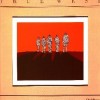 True West Drifters (1984). One of the more overlooked bands in the PU orbit, True West approximated what The Church might have sounded like with a touch of the great plains (via the Central Valley) stirred in to taste. Though the early lineup (featuring songwriter Russ Tolman) didn’t last long, they would manage to squeeze out a couple of great EPs and this superlative full-length debut. While Tolman and many of his peers from the Paisley scene would go further down the wagon trail of Americana and Alt-Country/No-Depression, Drifters remains the perfect balance of crisp, sparkling songwriting, with a kiss of twang felt in the flourishes of the occasional plangent guitar lead and brooding lyricism. Fans of early Robyn Hitchcock or The Go-Betweens darker material should investigate post-haste.
True West Drifters (1984). One of the more overlooked bands in the PU orbit, True West approximated what The Church might have sounded like with a touch of the great plains (via the Central Valley) stirred in to taste. Though the early lineup (featuring songwriter Russ Tolman) didn’t last long, they would manage to squeeze out a couple of great EPs and this superlative full-length debut. While Tolman and many of his peers from the Paisley scene would go further down the wagon trail of Americana and Alt-Country/No-Depression, Drifters remains the perfect balance of crisp, sparkling songwriting, with a kiss of twang felt in the flourishes of the occasional plangent guitar lead and brooding lyricism. Fans of early Robyn Hitchcock or The Go-Betweens darker material should investigate post-haste.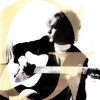 Game Theory Real Nighttime (1985). Scott Miller’s Game Theory were outliers in a scene already on the fringes. They came up in the same circuit, and shared bills and basic aesthetic choices with many of the Paisley school, but were closer to a traditional power pop band in execution. I know – the words “power pop” are a kiss of death for some of you out there, but don’t let that scare you off. Miller and his rotating cast of players churned out some of the most infectious albums of the era – songs stacked with hooks, each catchier than the one that preceded it. No one talks about it, but there’s no way Real Nighttime and The Big Shot Chronicles were not formative influences on The New Pornographers and their ilk.
Game Theory Real Nighttime (1985). Scott Miller’s Game Theory were outliers in a scene already on the fringes. They came up in the same circuit, and shared bills and basic aesthetic choices with many of the Paisley school, but were closer to a traditional power pop band in execution. I know – the words “power pop” are a kiss of death for some of you out there, but don’t let that scare you off. Miller and his rotating cast of players churned out some of the most infectious albums of the era – songs stacked with hooks, each catchier than the one that preceded it. No one talks about it, but there’s no way Real Nighttime and The Big Shot Chronicles were not formative influences on The New Pornographers and their ilk. Opal Early Recordings (1989). Although some of it came out under the Clay Allison moniker, most of this material didn’t see wide release until well after the departure of Kendra Smith, who, starting with The Dream Syndicate, appeared to be making a tradition out of quitting bands just when they were peaking. Though a lot of people swear by Happy Nightmare Baby (recorded later with Hope Sandoval), this material is perhaps the perfect literal embodiment of the enigmatic darkness that a term like “Paisley Underground” implies. The template for Mazzy Star is even more in evidence here, with Roback and Smith’s dark torch songs stretching out into extended, loose-limbed psych/folk jams without warning. If The Days Of Wine And Roses was a modern interpretation of White Light/White Heat’s pathos, Opal’s early movements were the equivalent of the third VU album – candlelit meditations of uninhibited beauty and longing.
Opal Early Recordings (1989). Although some of it came out under the Clay Allison moniker, most of this material didn’t see wide release until well after the departure of Kendra Smith, who, starting with The Dream Syndicate, appeared to be making a tradition out of quitting bands just when they were peaking. Though a lot of people swear by Happy Nightmare Baby (recorded later with Hope Sandoval), this material is perhaps the perfect literal embodiment of the enigmatic darkness that a term like “Paisley Underground” implies. The template for Mazzy Star is even more in evidence here, with Roback and Smith’s dark torch songs stretching out into extended, loose-limbed psych/folk jams without warning. If The Days Of Wine And Roses was a modern interpretation of White Light/White Heat’s pathos, Opal’s early movements were the equivalent of the third VU album – candlelit meditations of uninhibited beauty and longing.